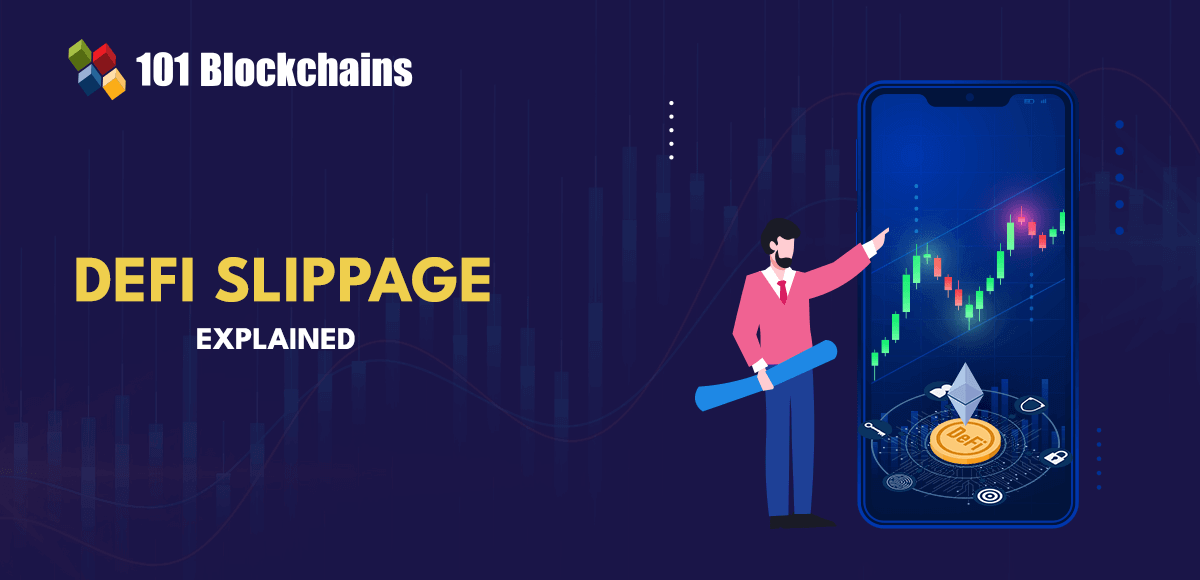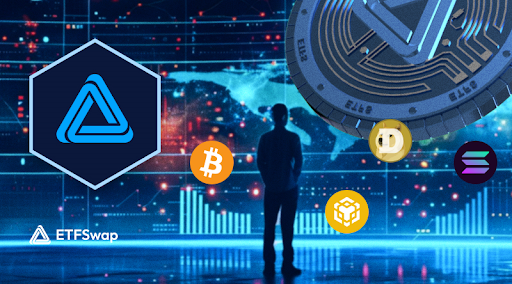Slippage in DeFi – Know Everything

Decentralized exchanges are the most popular solutions in the domain of DeFi. The failure of centralized exchanges such as FTX has created the demand for decentralized exchanges or DEXs. Decentralized exchanges serve as the platforms for crypto transactions worth billions of dollars every day. The most interesting fact about DEXs is that they uphold the primary tenet of DeFi, i.e., decentralization of financial services. Decentralized exchanges do not rely on intermediaries or centralized custody like centralized exchanges, thereby offering ‘true’ decentralization. However, slippage in DeFi could be one of the notable limitations for DEX users.
It is an inherent risk for DEX trading, which requires proven and tested solutions. Slippage is the price difference between the quote price of a cryptocurrency and the cost you pay for it. Slippage on popular decentralized exchanges, such as Uniswap, could be a formidable challenge for users.
The most common question in the mind of an on-chain trader is “how to avoid slippage in trading,” and the answer lies in understanding slippage. You should understand the reasons for which slippage happens in decentralized exchanges. In addition, you should also identify the different scenarios in which slippage happens on decentralized exchanges. Let us learn about the best practices to avoid slippage with an in-depth understanding of its impact on DeFi users.
Want to learn and understand the scope and purpose of DeFi? Enroll now in Decentralized Finance Course
A Simple Example for Understanding Slippage
The fundamental concepts of DeFi slippage explained for beginners would reflect on how the price change of an asset happens during execution of a trade. For example, you place a trade for buying 30 units of cryptocurrency for 1 ETH according to the quoted price. However, you might receive only 29 units of the cryptocurrency by the time the trade is executed. The difference of 1 unit is the outcome of slippage.
Slippage is also a common highlight in traditional markets. However, the effects of slippage are prominent in decentralized exchanges. On the other hand, a successful slippage trading strategy could help you avoid the risks of slippage. You could develop such strategies with a formal understanding of slippage and the factors that lead to slippage.
Learn the fundamentals of Decentralized Finance (DeFi) with DeFi Flashcards
What Are the Reasons Behind Slippage?
Slippage is the measure of difference between the quoted price for a trade and the final price of the trade at the time of execution. It is a mandatory feature in all financial markets due to the delay between the time when a trader sends a transaction and the time when it is executed. The fluctuations with slippage crypto trading would point to the fluctuations in the market price of assets during the time required for completing a trade.
Decentralized exchanges offer a quoted price according to the existing market conditions. However, the trader could also set a slippage percentage they are willing to risk for the trade. If the slippage percentage exceeds the specified range, then the transaction will revert, and the trade will be canceled.
Slippage could vary between positive and negative according to the market movements. Negative slippage implies bad news for traders, and positive slippage obviously fetches a better trade for DEX users. The answers to “What is DeFi slippage?” would also showcase the important factors that cause slippage. Here are the factors responsible for slippage on decentralized exchanges.
- Block confirmation times.
- Liquidity for the token pair in the trade.
- Trading volume.
- Design of Automated Market Maker of the DEX.
Let us find out the role of these variables in slippage for decentralized exchanges.
The block confirmation time is the duration of time between sending a transaction and its confirmation. How does block confirmation time affect slippage calculation for DeFi users? You should note that even the fastest transactions on Ethereum take 13 seconds for confirmation. Layer 2 chains and other blockchain networks could also offer faster block confirmation times.
However, the delay of seconds can result in a marginally higher increase in slippage. Remember that the crypto market is highly volatile, and prices of assets change within seconds. The silver lining for avoiding problems due to block confirmation time is to use more gas for faster confirmation of trades.
Build your identity as a certified blockchain expert with 101 Blockchains’ Blockchain Certifications designed to provide enhanced career prospects.
Majority of on-chain traders would know that token pairs with low liquidity could lead to high slippage. What is the impact of liquidity on slippage trading with a specific token pair? Most of the decentralized exchanges utilize the variant of a 50/50 liquidity pool design along with a price curve. Interestingly, large trades have the potential to introduce instability in the liquidity pool, thereby leading to slippage. Slippage is one of the big problems for token pairs that go through large price swings.
The trading volume on a DEX is also another prominent factor responsible for slippage. You must understand the different scenarios for slippage in DeFi due to fluctuations in trading volume to create secure trading strategies. For example, higher trading volumes could imply requirement of more time for block confirmation. As a result, traders could find massive changes in price of trade between the time of sending and time of confirmation.
-
Design of AMMs in Decentralized Exchanges
The design of the decentralized exchange is also another crucial factor responsible for slippage in transactions. Price curves and different conditions for liquidity, alongside other implementation practices, could determine the extent of slippage. The answers to “how to avoid slippage in trading” also involve the explanation of working mechanisms of Automated Market Makers. AMMs work with a formula for establishing the price of multiple assets deposited in liquidity pools. The ratio of assets in the liquidity pool helps in determining the price of the asset.
The Automated Market Maker mechanism ensures that users can trade assets without any available counterparty. With an AMM in the design of a DEX, users would not need market makers for the trade. Traders could deposit the asset they want to sell and withdraw the corresponding amount of the asset they want to buy. The slippage crypto working mechanism is also visible in the formula used for pricing assets in AMMs.
The classic AMM model utilizes a mathematical function for determining the price of an asset. It is also known as a Constant Product Market Maker Model and utilizes the function (x*y=k), and the ratio of assets in the liquidity pool could help in governing the price. In addition, slippage also happens due to subtle fluctuations in asset prices during the transaction confirmation time.
Want to explore in-depth about DeFi protocol and its use cases? Enroll now in DeFi Intermediate Level Course
Effects of Slippage
Another crucial highlight in the explanation for slippage would point to the impact of slippage. Traders need a detailed introduction to DeFi slippage explained in simple words to identify its effect on the overall profit or loss in trades. Slippages could appear as minor burdens for traders. However, they could add up over the course of time, and the impact of slippage is clearly visible in the case of large trades.
Let us assume that the trading price of BTC is $20,000, and a trader assumes that it would increase by around 5% in the next few hours. The trader would assume a profit target of 5% at $21,000 and a 2.5% stop-loss at $19,500. How does slippage calculation come into play in this case? You need to take the thousands of other traders into account who look at the price of BTC and come up with the same conclusion. The traders place their buy orders at the same time, and the price of BTC would move up by, let’s say, 2%. Therefore, the order placed by the first trader would be executed at $20,400 rather than $20,000.
Did you notice how slippage affected the entire structure of the trade? The trade was supposed to be a low-risk and high-reward trade. Slippage turned the tables and transformed it into a high-risk, low-reward trade. The impact of slippage trading affects not only the trading structure but also the trader. What would the first trader in the example do in this case? The trader is most likely to make mistakes such as early exits or making adjustments in profit target or stop-loss. Any unplanned move on behalf of the trader could increase the chances of failure of a transaction.
Want to understand the best ways to use DeFi development tools like Solidity, React, and Hardhat? Enroll now in the DeFi Development Course
Scenarios for Slippage in Decentralized Exchanges
The introduction to slippage would include more than the responses to “What is slippage in DeFi?” and the factors that cause slippage. At the same time, users should also know about the specific scenarios where they can encounter slippage. Here is an outline of the two scenarios where you could expect slippage in decentralized exchanges.
You learned how trading volume is a crucial factor for determining slippage in a decentralized exchange. When a liquidity pool receives a large order that it cannot handle, it leads to slippage. Liquidity pools obtain their price points for tokens on the basis of ratio of assets in the pool. How do large trades create instability in liquidity pools?
The large size of the transaction could withdraw a massive share of one asset and add another asset for significant changes in the ratio. You can find the slippage crypto equation as a general highlight in uncommon pairs with pools for low-liquidity protocols. Low-liquidity protocols do not have enough liquidity to maintain the price of assets for a high-volume transaction.
In addition, decentralized exchanges are hosted on blockchain networks such as Solana, Ethereum, and Binance Smart Chain. Therefore, decentralized exchanges would take some time to process transactions rather than ensuring instant transactions like centralized exchanges.
The next important scenario for slippage calculation involves regular trading. Even high-liquidity pools are not immune to slippage. It is an evident phenomenon for liquidity pools with popular asset pairs such as ETH-BTC. Why? The lack of instantaneous transactions on DEX creates difficulties for traders.
Want to understand how decentralized finance works and how it can reshape our monetary system? Check out the Introduction to Decentralized Finance (DeFi) Presentation now!
Best Practices for Avoiding Slippage
As you can notice, the price slippage could happen in the time gap between the time of sending and confirming the transaction. When the blockchain has more transactions, miners will prioritize the transactions that pay more gas. Let us find out the different ways to reduce the problems due to slippage.
-
Pay More for Faster Transaction Approval
Slippage is a common concern with limited block space alongside higher transaction volume. Therefore, transactions with low gas estimates would fall back in the line for hours. The longer duration for confirming your transaction could lead to concerns due to price changes during the same time.
Therefore, you can rely on slippage trading mechanisms like using more gas for your transaction. You could avoid such situations by getting your transaction approved before any changes in market prices. On top of that, you should remember that using more gas does not mean that you have to use double the gas amount. Faster transaction approval with more gas could leave little room for slippage.
You can also find how to avoid slippage in trading by using a layer 2 solution. Using more gas could help you avoid slippage. However, it could lead to a more expensive transaction. With layer 2 scaling solutions, you wouldn’t have to pay more to obtain faster confirmation.
Layer 2 scaling could offer faster and more cost-effective transactions than the ones on Ethereum. Layer 2 scaling solutions roll up Ethereum transactions and take them away from the main Ethereum chain. Therefore, you could find faster transaction confirmation with lower costs.
Become a Decentralized Finance (DeFi) pro with knowledge of the latest DeFi trends with DeFi Skill Path
Final Words
The impact of slippage in DeFi presents formidable concerns for traders. You should learn how slippage finds its way into DeFi solutions such as decentralized exchanges. As of now, DEXs are the most popular choices in the DeFi ecosystem. It is important to learn about the different factors responsible for causing slippage.
The notable factors underlying slippage include trading volume, liquidity of the token pair, and design of AMM of the DEX and block confirmation times. With a clear understanding of the variables responsible for defining slippage, you can find the ideal trading strategies for avoiding slippage. Learn more about the impact of slippage by exploring the fundamentals of DeFi with credible training resources now.

*Disclaimer: The article should not be taken as, and is not intended to provide any investment advice. Claims made in this article do not constitute investment advice and should not be taken as such. 101 Blockchains shall not be responsible for any loss sustained by any person who relies on this article. Do your own research!



